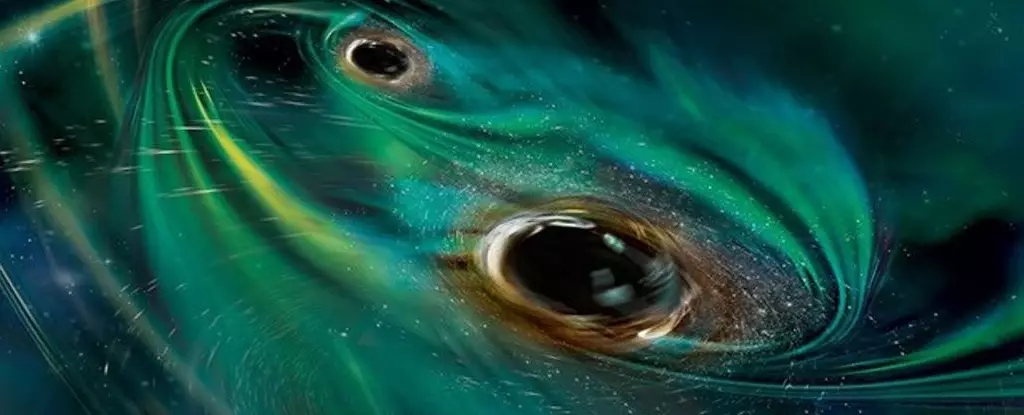In March 2021, astronomers caught sight of a remarkable astronomical phenomenon—a high-energy burst of light originating from a distant galaxy. Initially categorized as a potential supernova, this event, designated AT 2021hdr, intrigued researchers due to its unusual characteristics. The Automatic Learning for the Rapid Classification of Events (ALeRCE) flagged this anomaly, hinting that there was more to discover than merely another explosive stellar death.
Fast forward to 2022, and astronomers had the opportunity to observe another outburst from the same source. The Zwicky Transient Facility (ZTF) quickly detected a recurring pattern, noting these bursts occurred approximately every 60 to 90 days. This consistent interval signaled that AT 2021hdr was unlikely to be a conventional supernova, prompting a deeper investigation into its underlying mechanics.
Initially, one plausible explanation was that AT 2021hdr represented a tidal disruption event (TDE). In such cases, a star wanders too close to a black hole and undergoes violent disassembly as the black hole’s gravitational forces wage war on its structure. TDEs can generate bursts of energy as the remnants orbit the black hole in varying intervals. However, the apparent regularity of the bursts observed in AT 2021hdr suggested a different cosmic interaction was at play.
Taking a step back, researchers conceived a novel model involving a pair of binary black holes. Their predictions aligned with computer simulations suggesting that instead of simply tearing apart an interstellar gas cloud, binary black holes might instead engorge and churn the cloud, resulting in periodic light emissions. This theory proposed that as the black holes orbit each other, they modulate the brightness of the gas they are consuming, leading to the observed periodic bursts.
The Neil Gehrels Swift Observatory became instrumental in further analysis of AT 2021hdr. Observations showed striking oscillations in ultraviolet and X-ray emissions that correlated directly with the bursts cataloged by ZTF. These findings strongly align with predictions from the binary black hole model, providing substantial evidence for this cosmic scenario. Estimates indicated that the black holes, totaling around 40 million solar masses, are on an orbital path every 130 days. Furthermore, predictions reveal that should this pattern persist undisturbed, the black holes will merge in about 70,000 years—a relatively short period on cosmic timescales.
The significance of AT 2021hdr extends beyond mere observation. Astrophysicists plan to conduct ongoing studies to enhance their understanding of this system and its intricate connection to its host galaxy. This research will not only clarify the nature of gamma-ray bursts but also deepen our comprehension of black hole dynamics and their role in galaxy formation and evolution.
The investigation into AT 2021hdr exemplifies the power of modern astrophysical tools and cross-disciplinary collaboration, paving the way for monumental discoveries within our universe. The cosmic dance of black holes continues to unfold, revealing the profound mysteries that lie in the cosmos.


Leave a Reply